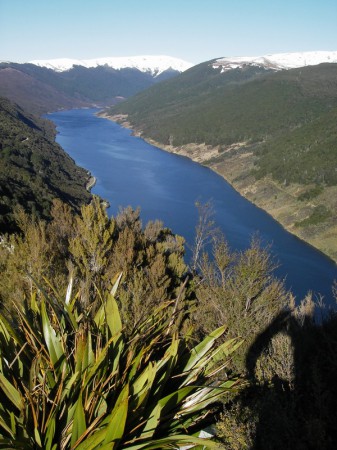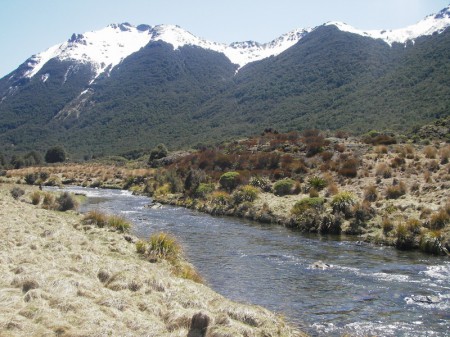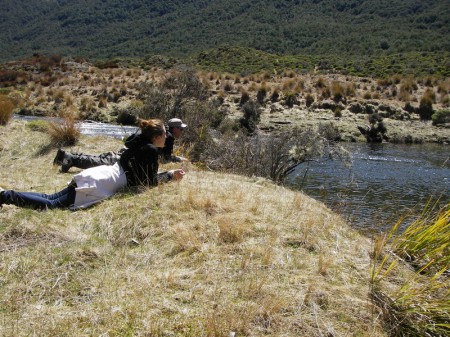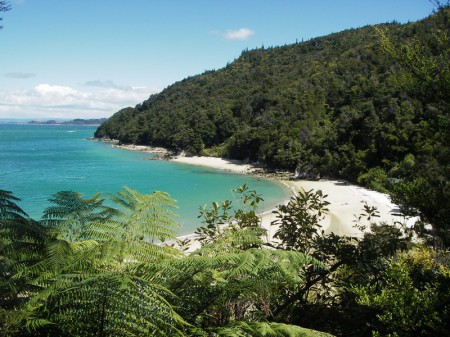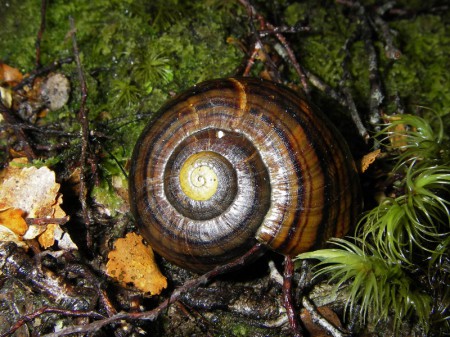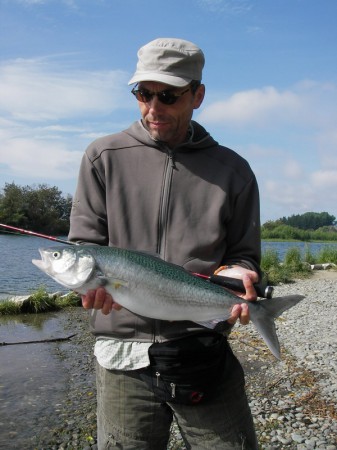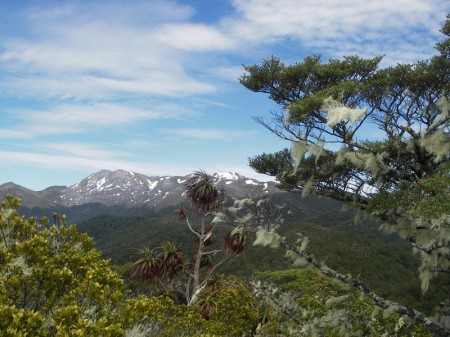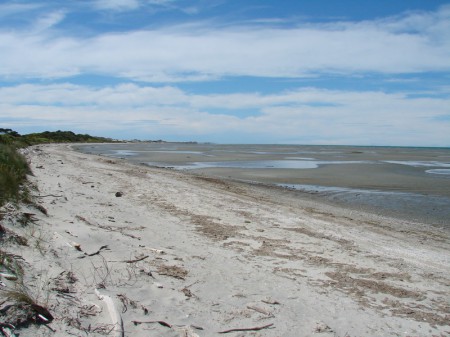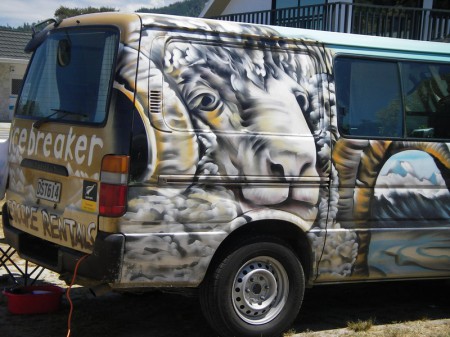Reefton Gold
While in Tasman Bay, we fished wonderful rivers like the Motueka, Riwaka, Cobb, Baton, Pears and the Wangapeka and had lots of fun and many hours of sheer pleasure.
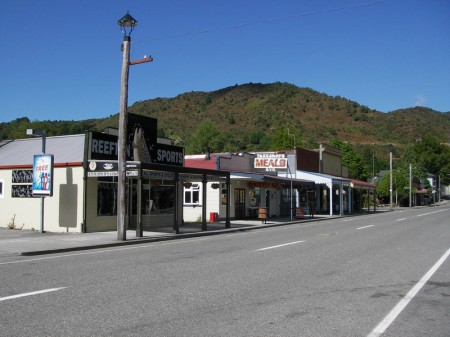 In the beginning it wasn’t easy going though. We had to fight our frustration when spooking several fish in a row and had to hone our stalking and presentation skills after several months of very different winter fishing on the North Island. A very careful approach, sometimes on our knees or even on our tummy, and leaders up to 18’ in length made all the difference. Even the heavy butt section of a leader, when landing with the slightest splash close to a fish was often enough to see it heading for cover. A long tippet and shorter casts with the fly landing close to the fish proofed to be best. After having managed the basics again, we couldn’t wait to get to Reefton, one of the favorite fishing grounds of a good friend of ours.
In the beginning it wasn’t easy going though. We had to fight our frustration when spooking several fish in a row and had to hone our stalking and presentation skills after several months of very different winter fishing on the North Island. A very careful approach, sometimes on our knees or even on our tummy, and leaders up to 18’ in length made all the difference. Even the heavy butt section of a leader, when landing with the slightest splash close to a fish was often enough to see it heading for cover. A long tippet and shorter casts with the fly landing close to the fish proofed to be best. After having managed the basics again, we couldn’t wait to get to Reefton, one of the favorite fishing grounds of a good friend of ours.
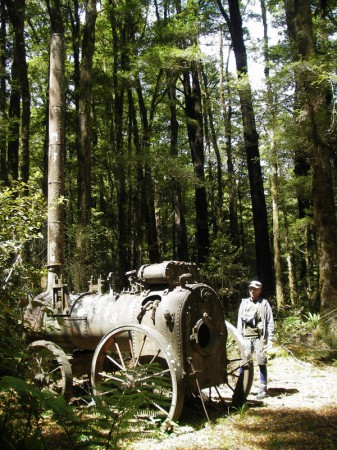 Reefton and the surrounding countryside are rich in history. The area has been extensively mined for gold and coal for almost 150 years and fascinating remnants of mining activities can be found almost everywhere. In its hay days Reefton was a bustling town, being the first in the Southern Hemisphere to have its streets lit by electric lights. Mining is still a major source of income for many today and the Pike river mine disaster end of last year has again reminded us of how difficult and dangerous the work of a miner is even in our modern world.
Reefton and the surrounding countryside are rich in history. The area has been extensively mined for gold and coal for almost 150 years and fascinating remnants of mining activities can be found almost everywhere. In its hay days Reefton was a bustling town, being the first in the Southern Hemisphere to have its streets lit by electric lights. Mining is still a major source of income for many today and the Pike river mine disaster end of last year has again reminded us of how difficult and dangerous the work of a miner is even in our modern world.
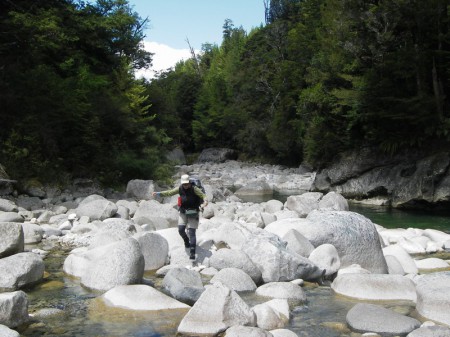 And then there are numerous rivers and creeks, most of them running through native forest and home to Brown and Rainbow trout. Larrys Creek, Stoney river, Waitahu, Montgomery, the Upper Grey, the Little Grey, the Rough and many, many more provide more fishing opportunities than one can explore in a lifetime. It’s not all easy going though and sometimes a couple of hours of fishing have to be earned by twice as long a hike in and out again.
And then there are numerous rivers and creeks, most of them running through native forest and home to Brown and Rainbow trout. Larrys Creek, Stoney river, Waitahu, Montgomery, the Upper Grey, the Little Grey, the Rough and many, many more provide more fishing opportunities than one can explore in a lifetime. It’s not all easy going though and sometimes a couple of hours of fishing have to be earned by twice as long a hike in and out again.
The weather was sunny and warm and we enjoyed some great fishing. With high temperatures in spring and a warm start of the summer, the cicadas were around much earlier than usual and we had some exciting fishing with big dry flies by the end of December already.
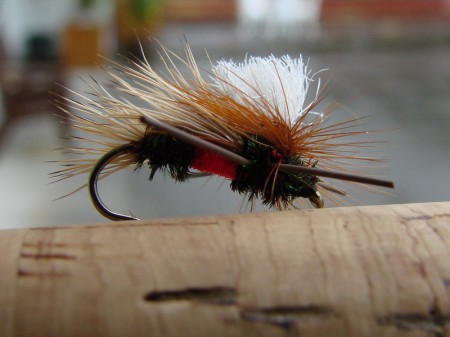
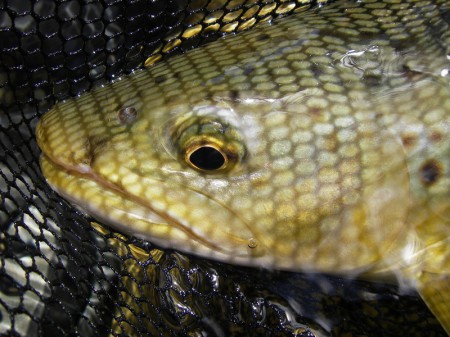 Many of the fish we came across proved to be quite particular and we had to keep changing patterns and try many different dry flies to be successful. One of the patterns that has been working best by far for the last 3 months is a fly shown to us by a friendly guy in the Hunting & Fishing shop in Nelson: the Royal Parachute Madam X or RPMX. This pattern in sizes 12 and 14 has become our most successful dry fly.
Many of the fish we came across proved to be quite particular and we had to keep changing patterns and try many different dry flies to be successful. One of the patterns that has been working best by far for the last 3 months is a fly shown to us by a friendly guy in the Hunting & Fishing shop in Nelson: the Royal Parachute Madam X or RPMX. This pattern in sizes 12 and 14 has become our most successful dry fly.
When in Reefton, we like to stay at the Bellbird Motel, a laid back place run by Malcolm and Alison, friendly hosts who like to have a chat. Alison is a very talented and passionate artist and visiting her gallery in High Street is always fascinating; we hope to have a piece of her work in our home one day. www.alisonhaleartist.vc.net.nz
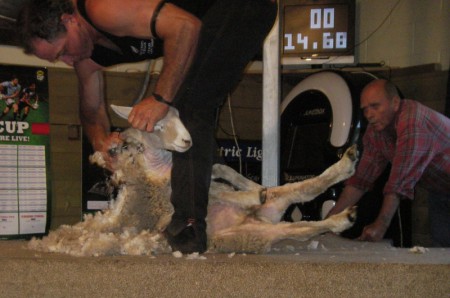 The mine disaster showed once more the spirited nature of the people on the West Coast; Reefton was no exception and the local Dawson Hotel organized a speed shearing competition to support the families of the miners. Some of the world’s best sheep shearers including several world champs showed their skills on a Saturday night and it took the winner of the day less than 16 seconds to shear a sheep. The crowd was in a very good mood and the event a great success with thousands of dollars going to the Pike River Trust.
The mine disaster showed once more the spirited nature of the people on the West Coast; Reefton was no exception and the local Dawson Hotel organized a speed shearing competition to support the families of the miners. Some of the world’s best sheep shearers including several world champs showed their skills on a Saturday night and it took the winner of the day less than 16 seconds to shear a sheep. The crowd was in a very good mood and the event a great success with thousands of dollars going to the Pike River Trust.
